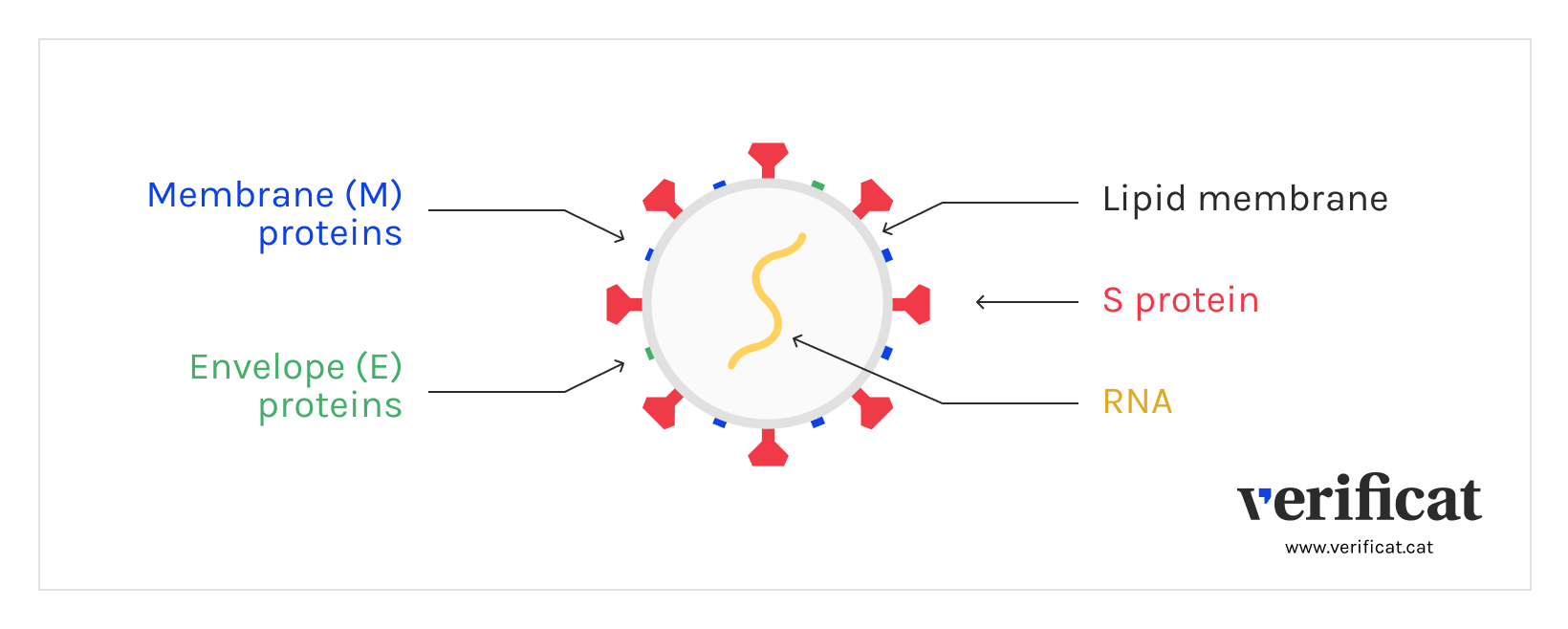Patents published before 2019 related with the pandemic do not indicate that the pandemic was designed
There are indeed pre-2019 patents related to PCRs, the Spike protein and even coronaviruses in general, but this does not prove that the pandemic was designed

You have sent us a video of a debate in which a man who self-identifies as Ángel Ruiz-Valdepeñas, whom Verificat has previously denied, claims that the pandemic has been "perfectly designed". To prove it, he cites an alleged investigation by a patent expert, whose name he does not share, in which, according to him, it was found that "there are 74 patents from before 2019 in relation to this [pandemic] situation". This is DECEITFUL. There are indeed pre-2019 patents related to PCRs, the Spike protein and even coronaviruses in general, but this does not prove that the pandemic was designed: PCR was invented years ago and there have been other coronaviruses before SARS-CoV-2 with similar components.
“There is an investigation done by a patent expert and "there are 74 patents published before 2019 in relation with this situation [the pandemics]. Spike protein, virus components, PCR… it means, we are in a perfectly designed situation"
Ángel Ruiz-Valdepeñas, a doctor who has been suspended for six years by the Medical Association of the Balearic Islands "for postulating the denial of the SARS-CoV-2 pandemic", and who is co-founder of the pandemic denialist group 'Médicos por la Verdad' according to an investigation by Maldita, claimed in a debate that the pandemic caused by covid-19 has been "perfectly designed", as there are "74 patents from before 2019 in relation to this situation". However, at no point does he cite the author of the alleged research or the title of the same, making it impossible to find the work.
It is true, however, that there are patents related to the pandemic. In 2005 alone, for example, more than 500 patent families were published that refer to coronaviruses, each comprising registrations in different countries related to the same invention, but it does not follow that the current pandemic has been planned. Firstly, the term coronavirus refers not only to SARS-CoV-2, but to a family of viruses, seven of which have historically been capable of infecting humans and share certain characteristics. Among them, they have the Spike or S protein on their surface.
In fact, “the investigation performed in the last decades with other coronaviruses allowed to identify and characterise the Spike protein”, highly conserved in all the viral family, Adelaida Sarukhan, immunologist and scientific writer at the Institute for Global Health (ISGlobal in Catalan) in Barcelona, explains to Verificat. It is this, she continues, that has allowed "vaccines against SARS-CoV-2 to be developed so quickly", since most of them use this protein as an antigen (the substance that induces an immune response when introduced into the body).
Other virus parts
S is not the only protein shared by all HCoVs. The Virology Encyclopaedia includes a section on the structure of coronaviruses, in which the similarities and differences between the other main proteins found in all the viruses of the family are found.
It is not strange, therefore, either that the scientific literature referred to some components of SARS-CoV-2 before 2019 beyond the Spike protein, or that there are patents related to these parts of the virus prior to the pandemic.
If one searches with the Google patents tool under the term SARS-CoV-2 for patents published before 2019, the searching engine only returns 35 results, none of them discussing the current virus. The pages appear in the search engine because they have been cited by post-2019 patents related to the covid-19 pandemic.
PCR, a 1985 invention
PCR tests were not developed in the context of the current pandemic. It is a technique invented in 1985 that allows the number of DNA copies in a sample to be increased exponentially. This makes it an ideal diagnostic test for infectious diseases such as covid-19 because, by generating millions of copies from a very small amount of a particular genetic material, it can determine whether or not a patient is infected.
That they have been so useful does not imply that the technology has been used only in the context of the pandemic: according to Sarukhan, it is "an invention that has had an enormous impact on both biomedical research and practical applications (diagnosis of infectious or genetic diseases, forensic medicine, biotechnology, etc.)", so its use cannot be linked exclusively to covid-19. In fact, the patent for PCR ended (the owner no longer has exclusive rights to his invention) more than 15 years ago, in March 2005 in the United States and one year later in Europe.
